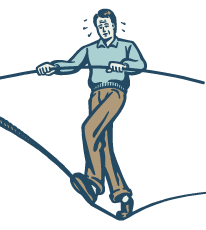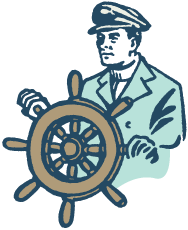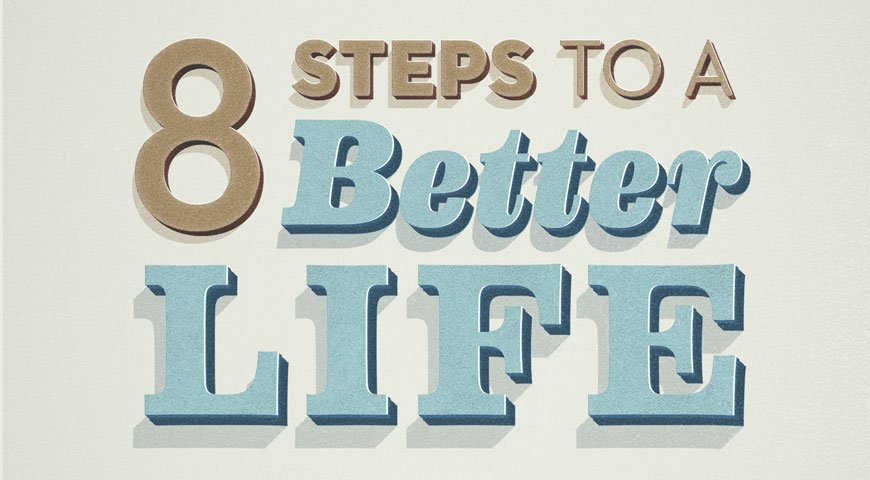01. DRINK YOUR BEST WINE
There’s an undeniable cachet to holding on to your best bottles for years and years. But if you’re reluctant to drink them, you’re missing out, says Doug Shafer, winemaker at Napa’s prestigious Shafer Vineyards. “A wine is like a book—it has a story. The best way to enjoy it is to experience it from cover to cover.” So when you buy a case, Shafer suggests, open a bottle every two to three years; staggered consumption allows you to “enjoy the wine at every stage of its evolution.” And while no bottle has a set-in-stone best time to drink, Shafer finds that whites such as sauvignon blancs, chardonnays and albariños are at their peak within three to four years of bottling. “There’s a lot to love in youthful merlots and pinot noirs as well,” he adds. For reds, Shafer says, “you’re safe within the 10- to 12-year window, but beyond 20 I think you begin having that experience where you pull a wine out of your cellar and its heyday has come and gone.”
Contact: Shafer Vineyards, 707.944.2877, shafervineyards.com

02. GET PROACTIVE ABOUT PERSONAL SECURITY
The biggest danger to you and your family in 2015 is complacency. “Seventy-two percent of our revenue is event-driven,” says Paul Michael Viollis Sr., CEO of security firm Risk Control Strategies (and a Worth contributing editor). At the top of Viollis’ threat list is cybercrime, particularly a new technique called “ghosting,” which enables hackers to become malevolent doppelgängers of their hosts. “You have no idea they’re there,” Viollis says. It’s also important to remain vigilant against the classic issues of express kidnapping, home invasions and the potential for theft following a liquidity event. The good news: A proactive security plan can mitigate even the most insidious threat. As a first step, RCS “looks at all the attack vectors that criminals use to get into your life,” ranging from residential exposure to children’s internet activities.

Contact: Risk Control Strategies, Paul Michael Viollis Sr., [email protected], 212.267.6992, riskcontrolstrategies.com

03. CHECK YOUR INSURANCE
It’s human nature to underestimate the potential for disaster, which is what leads to being underinsured. “Most people dread even thinking of their insurance, but it’s actually a very easy process,” says Jerry Hourihan, president of AIG’s Private Client Group. As a first step, Hourihan recommends reviewing potential lifestyle changes in the year ahead—anything from planning a home expansion and buying artwork to adding a 16-year-old driver to your policy. Once you have those, commit to having a discussion with a qualified independent agent. “They’ll take all your current insurance policies, ask you a few questions, and come back with a comprehensive overview of issues you might be presented with.” A good risk management plan will go beyond the home to encompass weather and natural disasters, collections such as wine and antique books, and the political and crime environments of planned travel destinations.
Contact: AIG Private Client Group, Jerry Hourihan, [email protected], 212.458.8815, aig.com/pcg

04. STRENGTHEN YOUR RELATIONSHIP WITH YOUR FINANCIAL ADVISOR
The best way to do that: communicate with him or her more frequently. As assets rarely change much month-to-month, “communication should be quarterly, tied to the performance report,” says Jack Waymire, founder of the website Investor Watchdog (and a Worth columnist). But as your life changes, it’s smart to be proactive in engaging with your advisor. Don’t keep secrets from him; if there’s something troubling you about your family, your work or your finances, share it. Every time there’s a meaningful change in your life, get your advisor involved—the earlier he knows about it, the more flexibility and help he can provide. Introduce your advisor to the rest of your team—your accountant, your insurance agent, your lawyer. You can get the full benefit of an advisor’s advice if he isn’t familiar with the other aspects of your financial life. And finally, introduce your advisor to your family; in case something happens to you, you want them to have a connection.
Contact: Jack Waymire, [email protected], 916.253.3334, paladinregistry.com

05. TAKE THAT TRIP YOU’VE BEEN PUTTING OFF
You know—the one you’re always too busy to take this year? “A bucket-list trip should be life changing,” says George Morgan-Grenville, CEO and founder of bespoke travel outfit Red Savannah. The key to a successful one: Embrace the “two squared half” rule. “Take double the time, pay double the money and go half the distance,” he says. A truly life changing trip should be at least 45 days and as long as six to seven months. Start planning at least 11 months in advance, Morgan-Grenville recommends, to get the best chance of staying in the most interesting places and preparing travel plans, which encompass everything from flights to vaccination schedules to visas. Which means: It’s time to get started.

Contact: Red Savannah, [email protected], 855.468.5555, redsavannah.com

06. SLEEP MORE AND BETTER
We know that sleep plays a pivotal role in our focus, memory and ability to handle high-stress environments (not to mention our happiness, waistlines and immune systems). “Unfortunately, in our society, sleep is often the first thing to go,” says Dr. Elizabeth Kensinger, director of the Cognitive and Affective Neuroscience Laboratory at Boston College. Most adults need seven to eight hours of sleep; Kensinger warns that while you may think you’re getting away with fewer, you’re probably not. “Often, people who are sleep deprived (for instance, after sleeping for four to five hours for a few nights) claim to feel as alert as usual, yet they often have sluggish processing speed and less clear thinking,” Kensinger says. If seven hours just isn’t possible, “even short naps can have large benefits for mental function.” The quality matters too—if mornings find you with body aches, chances are it’s time for a mattress upgrade. Also consider switching from nighttime exercise to mornings or early evenings, since an elevated core temperature close to bedtime can make it harder to fall asleep.
Contact: Dr. Elizabeth Kensinger, [email protected], 617.552.6949, bc.edu

07. SMILE WITH CONFIDENCE
It’s not just about vanity: A great smile can be a powerful tool in business by instilling and exuding confidence, while a stained set of jagged, crooked teeth can be a real turnoff. Plus, cosmetic dentistry has progressed immensely since its one-size-fits-all Chiclet beginnings. Today, surgeons such as New York’s Dr. Michael Apa create dental revamps that are customized for clients’ faces. Apa’s approach, called facial aesthetic design, melds facial mapping techniques with insights gleaned from an initial consultation to give you the right smile for your face and personality. “The first step is for the patient to have a conversation about goals and desires,” Apa says. From there, he analyzes your physical growth and development to forecast the ideal positioning of your teeth. At the second visit, you’ll be fitted with a set of temporary veneers; after a week, you’ll trade them for porcelain veneers. There’s no recovery time, so you can start smiling right away.
Contact: Rosenthal Apa Group, 212.794.9600, rosenthalapagrp.com

08. REVIEW YOUR PHILANTHROPIC GIVING
Taking stock of your charitable endeavors is critical to ensuring their sustained impact. First step: Look inward. “Traditionally, everybody thinks of evaluation as evaluating the people you’re giving money to. But many times the person you really should be evaluating is yourself,” says Page Snow, CMO of Foundation Source, a support services provider for private foundations. Are you hitting your targets in terms of scope and size of donations? Are you getting traction in your areas of interest? Are you a helpful resource to your nonprofits, or just a checkbook? Once you’ve really given thought to those questions, you can better assess recipients. Look at the past year’s performance: Is it in line with forecasts? As getting grantees to speak candidly about performance can be difficult, Snow suggests presenting your questions to them while or before the grant is distributed, and making successive donations contingent upon those questions being answered.
Contact: Foundation Source, Julie Binder, [email protected], 800.839.0054, foundationsource.com









